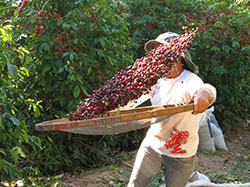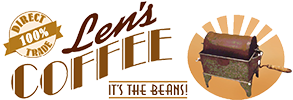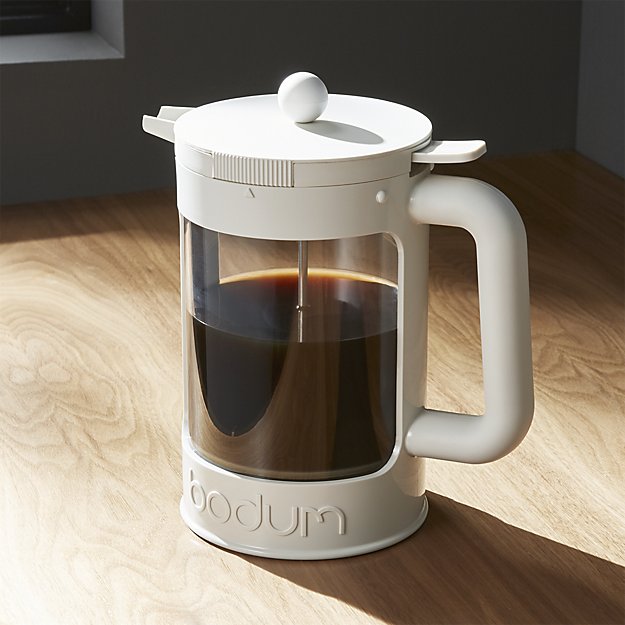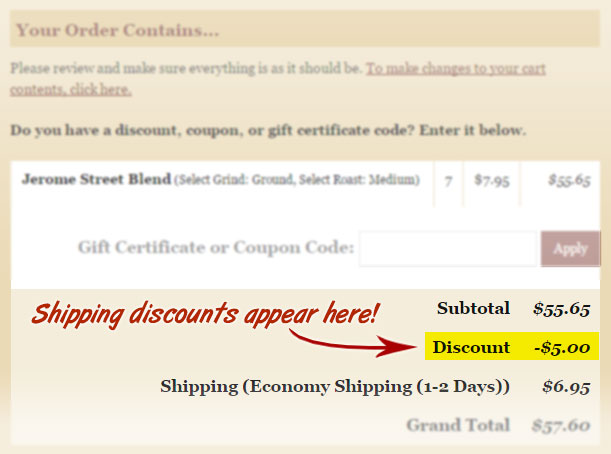- Home
- Brewing Iced Coffee - and Cold Brewing
Brewing Iced Coffee - and Cold Brewing
Nothing says Summer like a tall, frosty glass of iced coffee.
This page has a wealth of information on selecting, creating, and enjoying iced coffees, both traditional Vietnamese and modern American styles.
We have everything you need to know to enjoy a summer full of iced coffee!
First, iced coffee and cold-brew coffee are not the same thing. Cold brewing coffee just means hot water isn't used. People brew at room temperature or in the fridge when they want a different taste profile from their coffee. They might then heat the coffee to have hot coffee, or pour it over ice to have iced coffee. So keep in mind that "cold brew" does not equate to "iced".
How To Make Iced Coffee from Hot Brewing:
Vietnamese Coffeehouse Tradition:
When iced coffee is served to a customer in a Vietnamese coffeeshop, the coffee is presented brewing hot in a single-cup filter/brewer, as shown in our picture here, where a separate glass of ice is provided. When served this way, sweetened condensed milk is provided at the bottom of the glass into which the coffee is being brewed. There is usually more milk than the patron is expected to need or want... you stir up the milk into the coffee as much as wanted, and no more. By providing a LOT of sweetened condensed milk, the coffee shop accommodates a wide variety of tastes and leaves it up to the patron to decide how sweet they want it.
The phin (pronounced "pheen") can also be placed on top of a glass of cracked ice, and the coffee drips down in a picturesque manner over the ice. The milk is poured into the glass before the ice is added, and again, the patron stirs up as much of the milk as desired.
American style:
Drip machines are not good for making iced coffee, because it is very hard to make a concentrated brew that will accommodate melting of ice without getting too dilute. If you use a drip machine, use a little more coffee than normal and allow the brew to cool for awhile before pouring over ice.
French Presses are wonderful for making iced coffee from hot brew. Just add 50% more coffee when you brew and you can then pour the stronger brew directly over ice if desired. Don't just store the Press in your fridge, it will keep brewing and getting bitter. Pour the brew into a separate jar or bottle first.
Best Vietnamese iced coffees to try:
Our favorite iced coffees include Trung Nguyen Legendee and our own fresh-roasted Saigon Legend and the Saigon Cafe Blend. But you can find a fuller list of coffees we recommend for serving iced by visiting the Vietnamese Iced Coffee category.
And of course, Highlands' Ready-To-Drink coffee is always a great choice!
Best American-style iced coffees to try:
We have created several coffees optimized for cold brewing and icing. Try the Summer Breeze for gourmet coffee blended with coffee fruit, it's amazingly different and wonderful. The Catimor Cold Brew is an artful balance of sharp citrusy acidity, fruity notes, and cool back-palate caramel, butter and chocolate tones. It actually makes a fascinating hot coffee, but as an iced coffee, it is a symphony of flavor in a refreshing cold glass. Chocozilla and Mocharagua also make good iced coffee, and for decaf, we suggest Our Best American Blend DeCaf.
Making Iced Coffee with Hot-Water Brewing Methods, details
Dilution is the bane of hot-brewed iced coffee. When you hot brew coffee, unless you want to wait hours while it cools, you will have to have some way to predictably dilute the hot brew to the proper strength for drinking. It's easy to brew one cup, pour it over ice, then drink it reasonably soon, and enjoy it as it goes from being rather strong to rather weak. But in larger quantities you can really make a mistake and find out the mix is just not right.
Some people freeze coffee in an ice cube tray in order to have coffee ice cubes, which works well, but also takes time.
Here are some guidelines for making and/or strong larger quantities of iced coffee:
When you want to serve the coffee soon after brewing:
- Assuming you haven't created "coffee ice cubes", you need to figure how much coffee to use and how much ice to pour it over. Brew the coffee at 150% strength. This means if your pot holds 10 cups and you normally use 2.5 oz. of grounds, then add 50% more grounds, or about 3.75 oz.
- Have MORE ice on hand than you need. The more ice you have, the quicker the coffee cools, and the less dilution there is.
- Try to use ice that is not too small or too large. Large cubes do not contact the coffee fast enough, the coffee stays hot longer and melts more ice. If the ice is crushed or small pieces, the ice cubes will all melt and create weak coffee. Cracked ice or small cubes are best.
- Add cream and/or sugar to the coffee at the time of serving. But if you are using sweetened condensed milk or powdered creamer, add that to the HOT coffee before icing it. Most people want to sweeten the coffee themselves, so I usually add the cream but serve it with sugar and sugar substitutes on the side.
If you will cool the coffee before serving, the only difference is that if you have time to refrigerate the coffee before icing it. Use about 25% more grounds than normal, not 50% more grounds.
Making Cold-Brew Iced Coffee
Ok, your first response to "cold-brewing" was probably "what the.... you can't cold-brew coffee!" Everything you hear about brewing coffee, and particularly espresso, talks about getting the temperature hot enough to do the job right. Only recently, after Starbucks started their new cold brew ad campaign, has the concept of cold brew coffee really become widely known. Now it is the hottest thing since sliced bread.
The first thing to realize about cold brewing is that every type of extraction for coffee, from cold to super hot steam in espresso, yield a quite different flavor profile. There are 400 known elements in coffee contributing to its flavor profile, and each type of brewing tends to hit the spectrum differently. This is why some people simply prefer espresso extraction, and enjoy an Americano (espresso diluted with hot water) rather than drip coffee... the heat and pressure of espresso gives a very different profile.
Likewise, cold brewing brings out some elements and does not bring out others.
Cold versus Hot
Cold brewing takes time. However, it dissolves through the grounds only certain elements of the coffee. Surprisingly enough, about 90% of the flavor elements and the normal caffeine content come through this way, while only about 15% of the oils and acids will. It WILL change the taste of your coffee, but not the way you might think. It will strongly concentrate those most volatile flavor elements that most people like, making "super-flavor" coffee. The flavor elements you like about a given coffee will probably be up to 200% as strong, yet the overall brew will have far less bite and acidity.
Is this a good thing? For people who like the acid and bite, which is part of the attraction of strong coffee, they may not like cold brewing. Other people take one sip and say "Oh my God, that is fantastic." It's also a good choice for anyone who has stomach trouble with acidic foods. Our recommendation is simple: Try it once or twice and see if you like it. Also, different varieties will respond to cold brewing differently, so it's hard to predict.
Easy cold-brewing for small quantities
It takes no more prep time to prepare coffee this way than most
hot brewing methods. It just takes more time for it to brew, so plan ahead.
Many people ask us about the Toddy Brewer (copyright Toddy Products) and other devices sold for cold brewing. We prefer the simple bottle-and-strainer method when making high quantity, but we also like the French-Press style devices that are simple to use and store in the fridge. Primula and Bodum make good cold brew devices that are similar to a French Press. But we still usually wind up with our glass bottle :-)
Items needed: (To make enough for 2-3 glasses of iced coffee)
- A container for the final brew, which will be placed in the refrigerator when finished. This can be a pitcher or bottle or small carafe or even a tall jar with a lid.
- A tall glass for the brewing (or a mason jar with lid, etc.)
- A second glass for pouring the steeped coffee mixture into.
- A strainer. Use either a tea strainer from a kitchen shop (or look here for ours) or you may want to use a regular kitchen strainer and then run the coffee through a fine mesh strainer such as the ones they sell for drip machines, that use either fiberglass or metal mesh.
Measure a 1/4 to 1/3 cup (5-6 tablespoons) of coffee into the brewing glass. Add about a cup and a half of room-temperature water (bottled water or filtered water will taste best). You don't have to be really precise on these measurements. Just make sure you have about 4:1 water to coffee. Stir the mixture until it is even and there are no lumps. The coffee grinds will probably rise again in 10-15 minutes. Stir them back down again.
After the second stir, put some sort of lid on the container/container to keep the mixture clean, or use a canister-type container as we show here. Let it sit a minimum of 3 hours. It can sit overnight if you like (some people do this), but we find 3-6 hours is fine.
When ready, pour the mixture through the strainer into the second container. Clean the first glass to rinse out any grounds. Then pour the coffee back from the second glass into the first glass through the strainer again, or if you have one, a fine mesh coffee filter or the cup section of a Vietnamese Phin filter. This removes the fine grinds. It may be necessary to stop pouring once or twice to rinse the filter to clear the tiny holes at the bottom. Alternatively, you can just let the mixture settle for 15 minutes.
The jars shown below are actually the set I use for making a pitcher of coffee, but the principle is the same, only the quantity changes.


Pour the final mixture into your storage container and put it in the fridge. That's it!
This mixture is possibly 2-3 times as strong as you will want to drink it. Dilute with an equal amount of water to start. Serve over ice. If the mixture is too strong, add water water to dilute. Add cream and sugar at the time of serving. If you want to serve this coffee Vietnamese style, do the following:
Spoon a tablespoon of sweetened condensed milk into your glass. Fill the glass with cracked or small-cube ice, to the top. Pour the coffee (undiluted) over the ice but don't fill the cup. Stir the mixture around enough to mix the thick condensed milk up into the coffee. Then sip the coffee from the glass, don't use a straw. It's strong and sweet and cold.
Cold-brewing in quantity
The principles are exactly the same, use about 3:1 water to coffee grounds. A half-pound bag of coffee grinds should be mixed with about 5 cups of water, as a general guideline.
Grind your own whole beans if you want, make it a medium coarse grind for better results. Use larger containers. It will take longer to strain it, and you should be prepared to do it over a mat or the sink so that you don't stain anything with any spilled coffee or grounds.
Storage:
Do NOT add cream or creamer to coffee before storing it in the fridge. If you do, the life will be short, maybe 12-24 hours. If you store just the coffee without cream in it, it usually retains good flavor for 2 days or so, depending on the coffee.
If using stored coffee from the fridge, add the ice just before serving. It is best to add about 50% volume of ice to coffee, as about half of it will melt while being sipped, and thus the mixture will be about the right concentration.
Highlands Ready-To-Drink Iced Coffee
The ultimate in iced coffee convenience! Fresh-tasting Vietnamese coffee is now as easy as getting a can out of the fridge.
Latest Coffee Addition

Colombian Castillo Heritage Arabica!
Coffee from the days when Colombian coffee defined American consumer tastes. Warm, rich, delicious! Read more here!
 Loading... Please wait...
Loading... Please wait...




